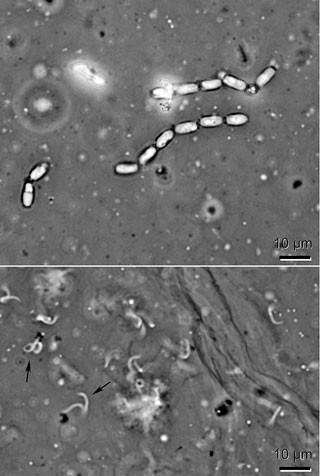Oocyst excystation in a defined medium
In vitro excystation of gregarine oocysts has been a useful tool for investigating the mechanisms underlying host specificity in gregarines. To date, all such techniques have depended upon the use of host intestinal extracts as an excystation medium. The object of this work is to develop a defined medium capable of eliciting gregarine oocyst excystation. Once developed, such a medium could be used to empirically investigate the roles of individual organic and inorganic constituents in excystation signalling and sporozoite survival as well as investigate the effects of differences in osmotic tension and enzyme use among host groups on excystation and sporozoite survival.
The technique may have broader implications. Related apicomplexan groups such as Cryptosporidium and the coccidia also undergo excystation. To date, most techniques used for these medically important groups are focused on the interior sporocyst but depend upon "brute force" chemical or mechanical techniques to penetrate the environmentally resistant oocyst wall. Development of new techniques to overcome oocyst wall resistance may be useful in research focused on apicomplexan groups other than the gregarines.
Shelby Steele is the lead researcher on this project.

